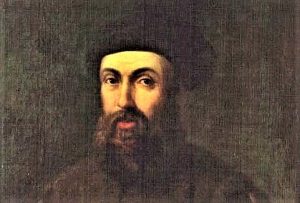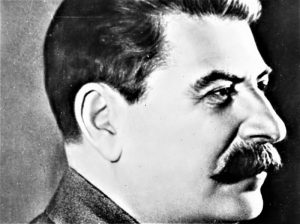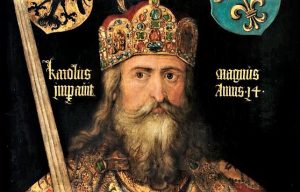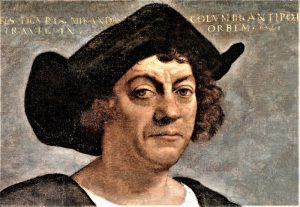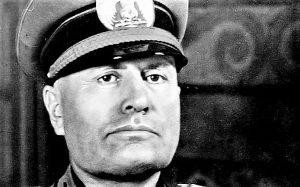Ivan the Terrible
The reign of Ivan the Terrible is considered one of the most dramatic periods in Russian history. This tsar has long been a familiar name, embodying atrocity, evil and arbitrary abuse of power. Many places in and around Moscow are associated with this enigmatic ruler. The Kremlin, the town of Russian Kolomenskoye: Коломенское, Russian St. Basil Cathedral or Khram Vasiliya Blazhennogo are just some of the places that have become Moscow landmarks and that are unimaginable without Ivan the Terrible.
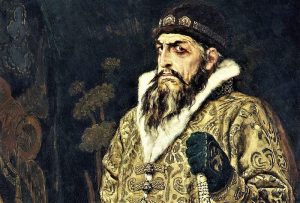
Personal Information
- Birth date: 03/09/1530
- Birthplace: Moscow, Russia
- When he died: 28/03/1584
- Where he died: Moscow, Russia
Who was Ivan the Terrible?
He was a Russian tsar who played a decisive role in the strengthening of the nation, but at the same time, he was widely known for the tremendous degree of cruelty with which he dedicated himself to punishing those who opposed him.
Biography of Ivan the Terrible
Son of Tsar Basil III and Elena Glinski. When Tsar Basil III died in 1533, Ivan IV was crowned when he was only three years old, but his mother ruled as regent, who was murdered five years later by intrigues among the boyar families fighting for power.
When he turned eighteen, Ivan IV of Russia ruled with the help of the Rada, which was a private council consisting of members such as the priest Sylvester, his preceptor Macarius and his secretary Alexei Adashev. Princess Anastasia Romanov, whom he had married in 1547, also had an influence.
The death of his wife in 1560 made him become more authoritarian and began to show the first psychopathic symptoms that led him to commit all kinds of and practice a type of exacerbated religiousness, almost touching the delirium.
Between 1560 and 1564, in order to strengthen his power against the aristocracy, Ivan the Terrible unleashed a bloody repression against the boyars and the clergy, disregarding the advisors of the Rada. It even attacked and devastated the old free cities of Novgorod and Pskov, and, in 1581, had his first-born assassinated.
Death
He died on March 18, 1584, when he was ready to play a game of chess. He was buried in the cathedral of St. Michael the Archangel. According to experts, the psychotic attacks, he suffered were due to the treatment of syphilis with mercury, which was common at the time and caused brain damage causing constant mood swings, euphoric and choleric, with psychotic dyes. Some historians believe that he was poisoned by the boyars, but there are references that say that he took small amounts of mercury against his syphilis.
Government of Ivan the Terrible
The first years of his government were devoted to internal organization and he undertook an expansive policy that led him to conquer Kazan and Astrakhan. He tried to drive away the Boyar nobility and lay the foundations of an administration that was united and centralized to create institutions of popular participation. He convened the general states for the first time and obtained a council to organize the church according to its purposes. He placed the peasants in the glebe and reorganized and modernized the army.
He positioned himself from the Volga valley and worked to extend the empire to the Urals and Siberia. He also wanted to find a way out of the Baltic Sea, but there was a clash of interests with Lithuania, Sweden, Poland and Denmark.
Library
It is believed that his library had a legendary collection of ancient books that have been searched for centuries and although there is no proof that it exists it is still being searched. The history of the library dates back to the 15th century when the Turks conquered. It is said that Thomas Palaeologus, brother of Constantine XI, before leaving gathered all the books from the bookstore that had accumulated the Byzantine emperors.
This library had about 800 volumes and was inherited by the daughter of Thomas, Sophie Palaeologus, who married Ivan III, the great prince of Moscow. Apparently she took the collection to Russia, which came to be called “Ivan the Terrible’s library“.
Parents
He was the son of Basil III and Elena Glinskaya, his lineage was of bluer blood and he witnessed as a child how his father left this world. His mother also died in 1538 and Ivan was filled with doubts regarding the causes of this death and caused him to believe that he had been poisoned by the boyars.
Relations
Surprisingly, Ivan the Terrible has a story that includes eight wives who were:
- Anastasia Romanovna Zacharina was chosen by a selection made in the Moscow Kremlin.
- Maria Temriukovna, daughter of a Circassian noblewoman with whom she had a son. She died poisoned.
- Marfa Vasilyevna Sobákina, was found dead 16 days after the possibly poisoned marriage.
- Ana Ivanovna Koltóvskaya, a commoner who was locked up in a convent two years later.
- Ana Grigoryevna Vassilchikova, also locked in a convent.
- Vasilisa Meléntieva, his sixth wife surprised with a lover who was bestially nailed, and she locked in a convent.
- María Dolgorúkaya was his fiancée but they did not marry because she was not a virgin. After realizing this, she appeared drowned.
- Maria Fyodorovna Nagaya who was also locked up in a convent.
Children
Ivan the Terrible had only one son whom he murdered in 1581. According to the story, his son had reproached him for the ill-treatment of his pregnant wife, and Ivan the Terrible took an iron cane and hit him on the head, causing his immediate death. Although he killed him himself, it made him go even further mad.
Works
The most recognized work that exists on the life of Ivan the Terrible is by the Russian painter Ilya Repin in which he portrays a tsar holding the body of his son, whom he killed during one of his attacks of anger.
Ivan the Terrible phrases
There is no record of many phrases that would have been pronounced by Ivan the Terrible, but two of those that do have a record were the following:
- The two Roman empires have disappeared. The third, Moscow, stands.
- From the time of Adam to this day, I have surpassed all sinners. Beastly and corrupt, I have defiled my soul.
Importance
Ivan the Terrible was a character of great importance to Russia, mainly because of his great contributions such as the conquest of Siberia, the creation of a new legal code, the centralization of power in the capital making it dominate the nobility, the formation of a series of institutions of popular participation, the conquest of the Tatars of Kazan and Astrakhan and a series of important and great internal reforms, such as the reform of the army and the revision of the legal code.
Ivan the terrible in popular culture
Films and plays
- Soviet filmmaker Sergei Eisenstein made two films about the life and reign of Ivan the Terrible. The first was based on Ivan’s early years. The second film narrates the period of his maturity.
- “Tsar” was a 2009 Russian drama film directed by Pavel Lungin.
- Russka (1991) was a novel by Edward Rutherford narrating Ivan’s life.
- Ivan the Terrible is a main character in the Soviet-era fictional comedy Ivan Vasilyevich: Back to the Future. It was one of the most popular films in the Soviet Union in 1973 and sold more than 60 million tickets.
- Ivan the Terrible also appears as an important character in the novel The Ringed Castle, one of the six novels in the historical fiction series.
Books
- Ivan the Terrible by Isabel de Maradiaga
- Stephen Graham’s Ivan the Terrible
- Ivan the Terrible, the evil reign of Benson Bobrick
- Gayle Lynds Gold Library
How to cite this article?
Briceño V., Gabriela. (2019). Ivan the Terrible. Recovered on 3 January, 2025, de Euston96: https://www.euston96.com/en/ivan-the-terrible/



